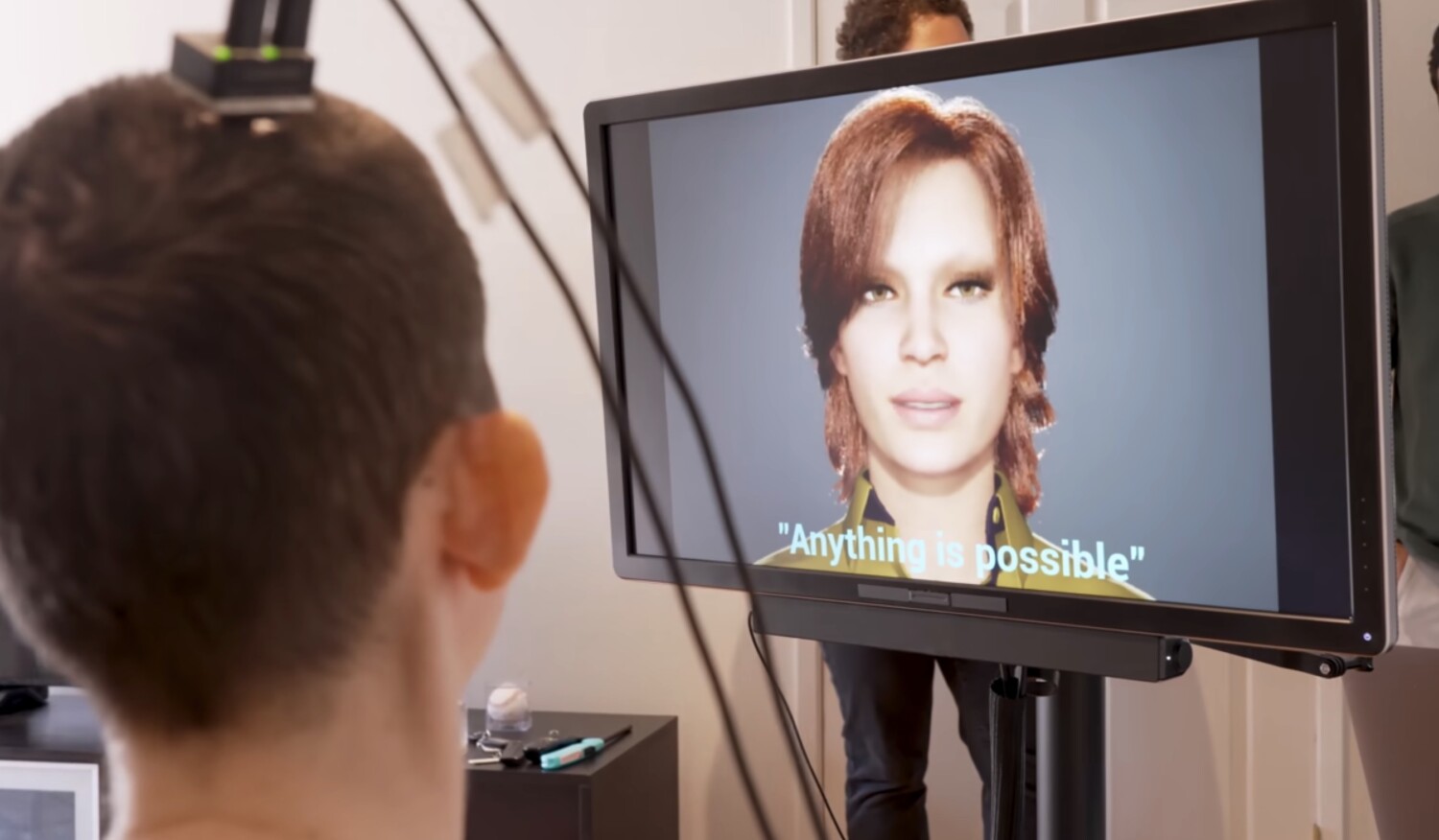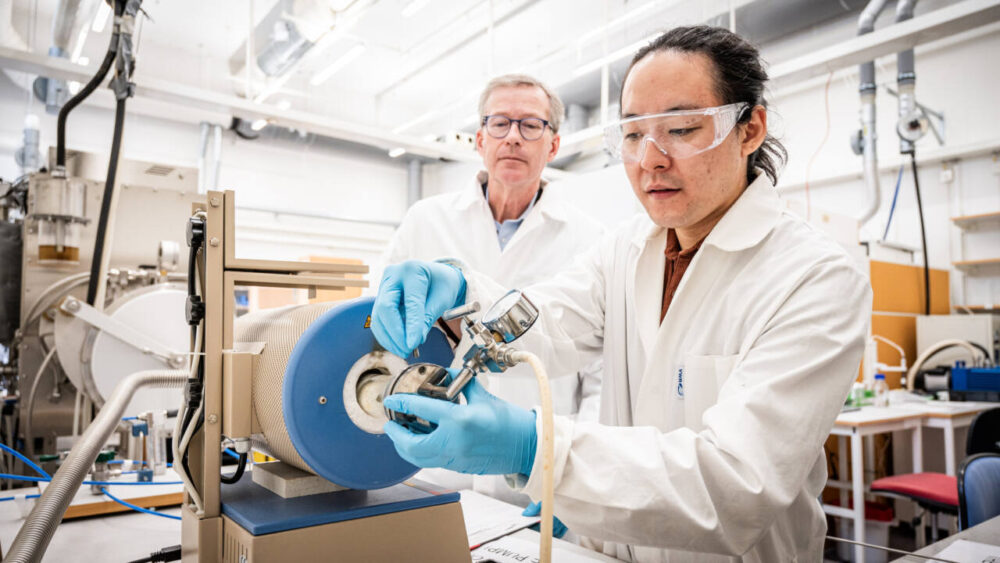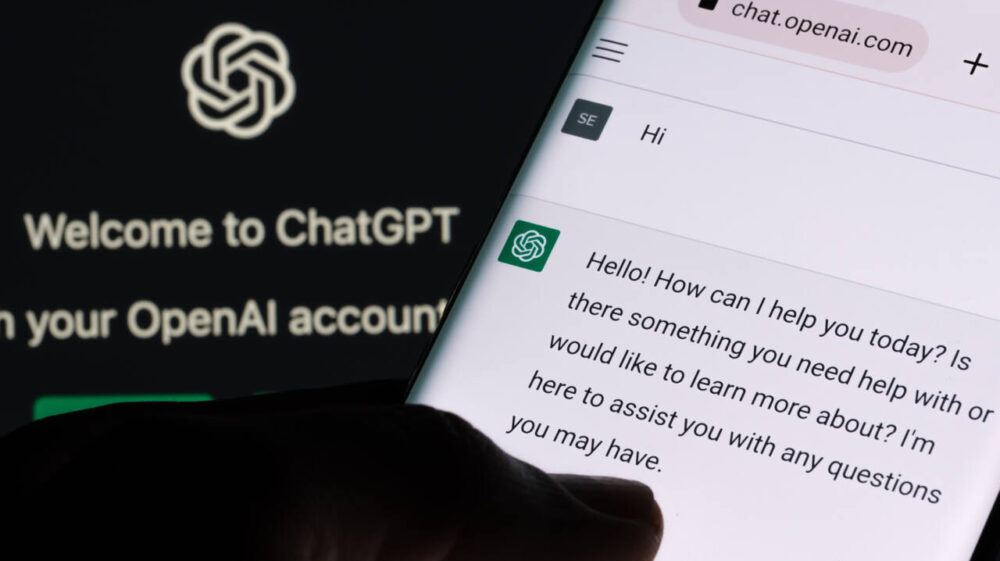Brain implants with AI are helping two nonverbal people speak again
Two separate studies published Aug. 23 in the British science journal Nature show the promise of brain-computer interfaces assisted by artificial intelligence to create speech from brainwaves. These important advancements could eventually help many nonverbal patients as the technology becomes faster, more reliable, and more user-friendly.
Helping Ann Johnson Talk
The first study details how an implant in the brain of a paralyzed woman and the assistance of artificial intelligence allowed her to “speak” her thoughts for the first time in 18 years.
At age 30, Ann Johnson had a stroke that paralyzed her, the New York Times explains. Once an active, talkative woman, she could barely move and couldn’t talk, and she relied on a feeding tube for sustenance. She eventually regained the ability to move her head and eat soft foods, but Johnson could initially only communicate through a fairly simple letter board. Later, she started using a basic system in which she aimed a reflective dot a on pair of glasses at letters on a screen; she still uses this older system, called a Dynavox, at home today. Both of those options took a long time to convey her thoughts, though.
Through a trial program from researchers at the University of California, San Francisco, and the University of California, Berkeley, Johnson received an electrode implant on the surface of her brain cortex. These electrodes read neurons firing off and translate that to speech. An AI avatar of Johnson that incorporates her voice, which was recreated from old videos of herself, can tell back what she communicates via the brain implant. This includes some facial expressions.
In this video, produced by UCSF’s Chang Labs and posted in Nature’s summary, you can see how the brain-computer interface works.
The breakthrough is incredible to Johnson.
“The simple fact of hearing a voice similar to your own is emotional,” Johnson told researchers in a feedback session, according to Nature. “When I had the ability to talk for myself was huge!”
The new system proves that the field is moving quickly. The results show a technological leap from another brain implant trial a few years ago, which came from the same team at UCSF. According to the research, a patient nicknamed Pancho was able to use his device to use about 50 basic words, which showed up as text on a screen. Johnson’s device has a 25.5% error rate and relays speech back at 78 words per minute.
In this video posted by UCSF, researchers explain how the brain-computer interface works and show Johnson and her husband having a real conversation using the technology.
MORE: Brain and spine implants enable man with paralysis to walk again
Another Study Helps ALS Patient Pat Bennett
The second study, out of Stanford University, details how a similar system was implanted into the brain of 67-year-old Pat Bennett. Bennett, once an active jogger and equestrian, has amyotrophic lateral sclerosis (ALS), or Lou Gehrig’s disease, as well as motor neuron disease, which has gradually taken her ability to talk.
Stanford researchers used electrodes placed a few millimeters into areas of the brain used for speech. Then, they trained deep-learning algorithms to recognize the signals in Bennett’s brain as she tried to voice various words and phrases. The AI decodes these from smaller units of speech at a rate of 62 words per minute. This technology works three to four times faster than its previous model, with a smaller error rate.
“For those who are nonverbal, this means they can stay connected to the bigger world, perhaps continue to work, maintain friends and family relationships,” said Bennett in a statement.
Here’s a segment from Stanford on Bennett’s brain implant technology.
“It is now possible to imagine a future where we can restore fluid conversation to someone with paralysis, enabling them to freely say whatever they want to say with an accuracy high enough to be understood reliably,” said Francis Willett, a Stanford University neuroscientist and study co-author, in an Aug. 22 press conference.
What’s Next?
Scientists are now working to make the technology user-friendly enough that it doesn’t need to be operated by researchers and scientists. They also hope to remove any visible outer connections or cables.
Along with that, they want to make it more accurate as well as cordless, which would allow the technology to be incorporated into the daily lives of patients. If it could be made more portable, it could be used by caregivers and the person with a disability using the device.
Both systems show great promise in helping those unable to talk gain a new form of speech, and experts say this technology could become more widespread in a matter of years.






